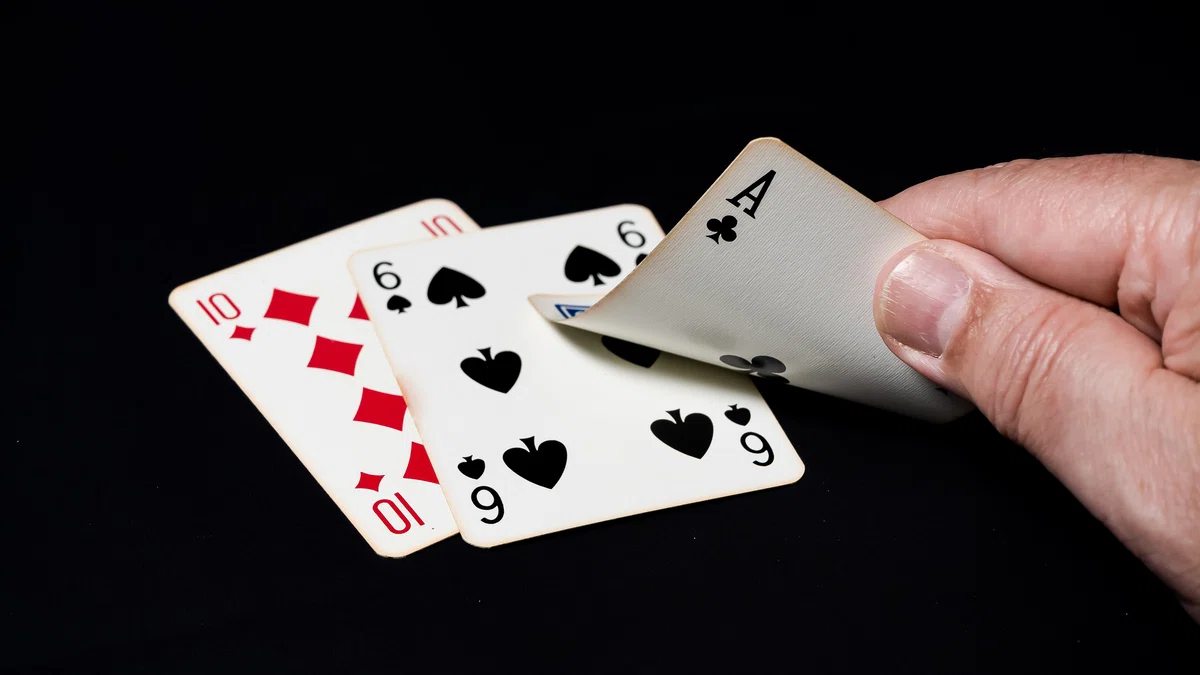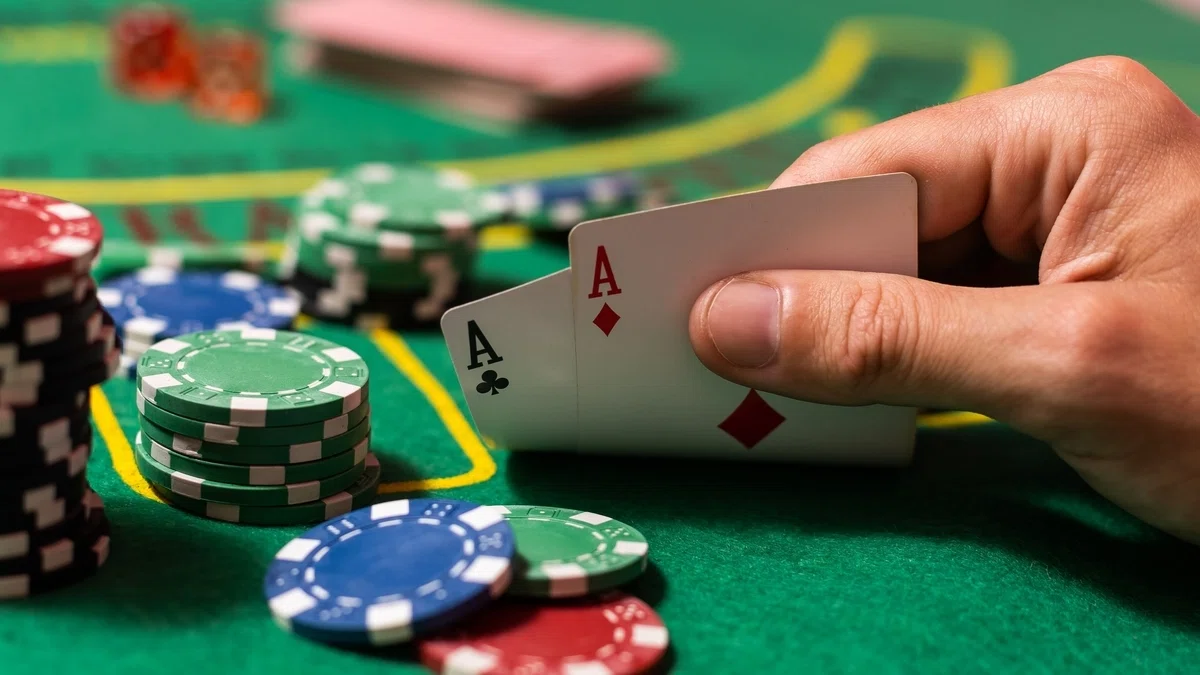Blackjack is one of the world’s most popular games for a reason – it’s fast-paced, rounds are quick, and it looks deceptively simple while you’re playing. Many have dedicated their time to figuring out the perfect blackjack strategy, to varying degrees of success.
In trying to devise the optimal strategy, fans created blackjack charts that can tell you what the best move is at a glance. Today, you’re going to learn how they work and how they vary depending on how many decks the table is using.
Are There Specific Blackjack Strategies?
Yes, there are known strategies you can follow on blackjack games. These are the most popular:
You can also use some basic blackjack tactics available and there are also ways of managing your bankroll efficiently, as you can see in our guide.
Blackjack Strategy: Where to Start?
At its most basic, blackjack strategy can come down to a lot of “if X then Y” statements. If the dealer has a certain number, it makes the most sense to hit or stand. Blackjack charts use deck formation to refine this approach but, first, you should know the basics.
Here are three blackjack basic strategy rules you should keep in mind.
1. Assume the Dealer is Hiding a Ten
The dealer’s downcard is your biggest threat in a blackjack game. When they turn it over, you’ll learn if you’ve either won or lost the game. To avoid getting complacent, savvy blackjack players recommend treating that card with caution – always assume it’s worth 10, do the math, and try to get higher than the dealer’s hand.
2. Stand on 17
When playing blackjack, anything above 17 is the danger zone. At 17 and above, the next card draw is more likely to put you over 21 than not. You don’t want that, so blackjack players typically stand at 17 or higher.

3. Always Split Aces and 8s
If you’re lucky enough to land two aces or two eights, always split them. Splitting aces doubles your chance to build at least one strong hand, or maybe both if you’re lucky. Splitting eights makes it much more likely to get one or both to at least 17. Never split tens – it’s not worth breaking a 20 hand to get two ten hands that might not go the distance.
Recap of the Blackjack Rules
To keep it short, since the beginning of the history of blackjack you are trying to beat the dealer by getting as close to 21 as possible without going over. The dealer will set down two cards in front of you and keep two for himself, one faced down. Your card value is stated, but you don’t know what the dealer is hiding under that second card.
Maybe you’re below the dealer, so you need another card, or maybe you’re so close to 21 that you need to bank on the dealer’s downcard being a dud.
When it’s time to make a decision, you’ll have a choice between the following:
- Hit – you take another card, its value is added to your sum.
- Stand – you refuse more cards, you think you’re closest to 21.
- Double Down – Double your bet, take one more card.
- Split – Create two hands to play at once, only available for same-value cards.
- Surrender – Tap out of the bet, losing half of the stake. Not everybody offers this!
Blackjack can be played with one or multiple shuffled decks, which randomizes every card draw. So, the best blackjack strategy is all about making decisions that put you in the best possible position, then hoping lady luck can guide you the rest of the way.
There are other rules, like insurance and other blackjack side games. These have no bearing on the actual game, but they provide opportunities to win based on coincidental card draws. If your first two cards make a pair, for example, or can make a three-card poker hand with the dealer’s card.
Once side bets are settled, the game continues normally.
Want to know more? Head over to our post on how to play blackjack.
Blackjack Charts: How Do They Work?
A blackjack strategy chart can look overwhelming at first glance, but they’re really quite simple. These charts are presented as grids, and in those grids you’ll find letters corresponding to your possible actions.
You find your hand value on the vertical axis, then the dealer’s upcard on the horizontal, and trace on the grid where you overlap. The letter there is what you should do.
Here’s what those letters mean:
- H = Hit
- D = Double Down
- S = Stand
- R = Surrender
- P = Split
Related Post:
You’ll also see letter combinations on these charts – Ds, for example. This is telling you to double down but, if that isn’t allowed, then you should stand. The uppercase letter takes priority over the lowercase, which is plan B.
Single Deck Blackjack Chart
Now it’s time to get into our first blackjack strategy chart – the single deck. This is for where blackjack is played with one deck. Your approach will vary if you have an ace hand (soft) or not (hard).
| Dealer’s Upcard | |||||||||||
| Player’s Hand | HARD | 2 | 3 | 4 | 5 | 6 | 7 | 8 | 9 | 10 | A |
| 5-7 | H | H | H | H | H | H | H | H | H | H | |
| 8 | H | H | H | Dh | Dh | H | H | H | H | H | |
| 9 | Dh | Dh | Dh | Dh | Dh | H | H | H | H | H | |
| 10 | Dh | Dh | Dh | Dh | Dh | Dh | Dh | Dh | H | H | |
| 11 | Dh | Dh | Dh | Dh | Dh | Dh | Dh | Dh | Dh | Dh | |
| 12 | H | H | S | S | S | H | H | H | H | H | |
| 13 | S | S | S | S | S | H | H | H | H | H | |
| 14 | S | S | S | S | S | H | H | H | H | H | |
| 15 | S | S | S | S | S | H | H | H | H | Rh | |
| 16 | S | S | S | S | S | H | H | H | Rh | Rh | |
| 17 | S | S | S | S | S | S | S | S | S | Rs | |
| 18+ | S | S | S | S | S | S | S | S | S | S | |
| SOFT | 2 | 3 | 4 | 5 | 6 | 7 | 8 | 9 | 10 | A | |
| 13 | H | H | Dh | Dh | Dh | H | H | H | H | H | |
| 14 | H | H | Dh | Dh | Dh | H | H | H | H | H | |
| 15 | H | H | Dh | Dh | Dh | H | H | H | H | H | |
| 16 | H | H | Dh | Dh | Dh | H | H | H | H | H | |
| 17 | Dh | Dh | Dh | Dh | Dh | H | H | H | H | H | |
| 18 | S | Ds | Ds | Ds | Ds | S | S | H | H | S | |
| 19+ | S | S | S | S | S | S | S | S | S | S | |
2 Deck Blackjack Chart
Other tables play with a double-deck arrangement, so you have two sets of playing cards to contend with. This adjusts the blackjack strategy chart. Check out the chart below – it’s for dealers who stand at soft 17, perfect for casinos where the dealer is required to stand at 17.
| Dealer’s Upcard | |||||||||||
| Player’s Hand | HARD | 2 | 3 | 4 | 5 | 6 | 7 | 8 | 9 | 10 | A |
| 5-8 | H | H | H | H | H | H | H | H | H | H | |
| 9 | Dh | Dh | Dh | Dh | Dh | H | H | H | H | H | |
| 10 | Dh | Dh | Dh | Dh | Dh | Dh | Dh | Dh | H | H | |
| 11 | Dh | Dh | Dh | Dh | Dh | Dh | Dh | Dh | Dh | Dh | |
| 12 | H | H | S | S | S | H | H | H | H | H | |
| 13 | S | S | S | S | S | H | H | H | H | H | |
| 14 | S | S | S | S | S | H | H | H | H | H | |
| 15 | S | S | S | S | S | H | H | H | H | H | |
| 16 | S | S | S | S | S | H | H | H | H | H | |
| 17+ | S | S | S | S | S | S | S | S | S | S | |
| SOFT | 2 | 3 | 4 | 5 | 6 | 7 | 8 | 9 | 10 | A | |
| 12 | H | H | H | Dh | Dh | H | H | H | H | H | |
| 13 | H | H | H | Dh | Dh | H | H | H | H | H | |
| 14 | H | H | Dh | Dh | Dh | H | H | H | H | H | |
| 15 | H | H | Dh | Dh | Dh | H | H | H | H | H | |
| 16 | H | Dh | Dh | Dh | Dh | H | H | H | H | H | |
| 17 | S | Ds | Ds | Ds | Ds | S | S | H | H | H | |
| 18+ | S | S | S | S | S | S | S | S | S | S | |
4 to 8 Deck Blackjack Chart
A lot of blackjack tables use multiple decks – from four to as many as eight all shuffled together. For this situation, you’ll want to use this chart. Once again, it assumes the dealer will stand on a soft 17.
| Dealer’s Upcard | |||||||||||
| Player’s Hand | HARD | 2 | 3 | 4 | 5 | 6 | 7 | 8 | 9 | 10 | A |
| 4-8 | H | H | H | H | H | H | H | H | H | H | |
| 9 | H | Dh | Dh | Dh | Dh | H | H | H | H | H | |
| 10 | Dh | Dh | Dh | Dh | Dh | Dh | Dh | Dh | H | H | |
| 11 | Dh | Dh | Dh | Dh | Dh | Dh | Dh | Dh | Dh | H | |
| 12 | H | H | S | S | S | H | H | H | H | H | |
| 13 | S | S | S | S | S | H | H | H | H | H | |
| 14 | S | S | S | S | S | H | H | H | H | H | |
| 15 | S | S | S | S | S | H | H | H | Rh | H | |
| 16 | S | S | S | S | S | H | H | Rh | Rh | Rh | |
| 17+ | S | S | S | S | S | S | S | S | S | S | |
| SOFT | 2 | 3 | 4 | 5 | 6 | 7 | 8 | 9 | 10 | A | |
| 13 | H | H | H | Dh | Dh | H | H | H | H | H | |
| 14 | H | H | H | Dh | Dh | H | H | H | H | H | |
| 15 | H | H | Dh | Dh | Dh | H | H | H | H | H | |
| 16 | H | H | Dh | Dh | Dh | H | H | H | H | H | |
| 17 | H | Dh | Dh | Dh | Dh | H | H | H | H | H | |
| 18 | S | Ds | Ds | Ds | Ds | S | S | H | H | S | |
| 19+ | S | S | S | S | S | S | S | S | S | S | |
Blackjack Charts: Are They the Perfect Blackjack Strategy?
As you can see, the perfect blackjack strategy varies depending on the table you’re playing at. Some tables allow double downs, others don’t. Some don’t allow surrender, or only allow it early into the game.
By far, the biggest determining factor is if the dealer is required to hit or stand at 17. That gives you a very predictable behavior pattern that you can build a strategy around – the charts here assume the dealer will stand at a hard or soft 17. Some tables let the dealer hit on a soft 17, even if they have to stand at hard 17.
The perfect blackjack strategy is finding a blackjack table that you enjoy, with rules that fit the chart. Then you can memorize the blackjack optimal strategy for each hand value, then apply it to your game. Even with a chart on your side, remember that blackjack is still a game of luck – the cards will fall against you sometimes and optimal blackjack bankroll management is key.
Wrapping Up with Strategies for Blackjack
These handy charts should be enough to get you started at most stand-17 tables, no matter if they use one, two, or up to eight decks. Learn them and put them into action at McLuck social casino, your favorite!
If you’re just starting to learn casino strategies, you’ll find more actionable strategies at the McLuck Blog. This is just one guide out of many, and we cover everything from card games to roulette, with more to come!

